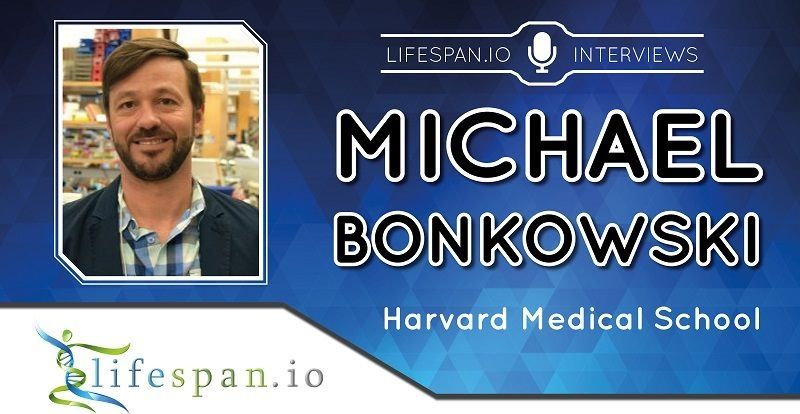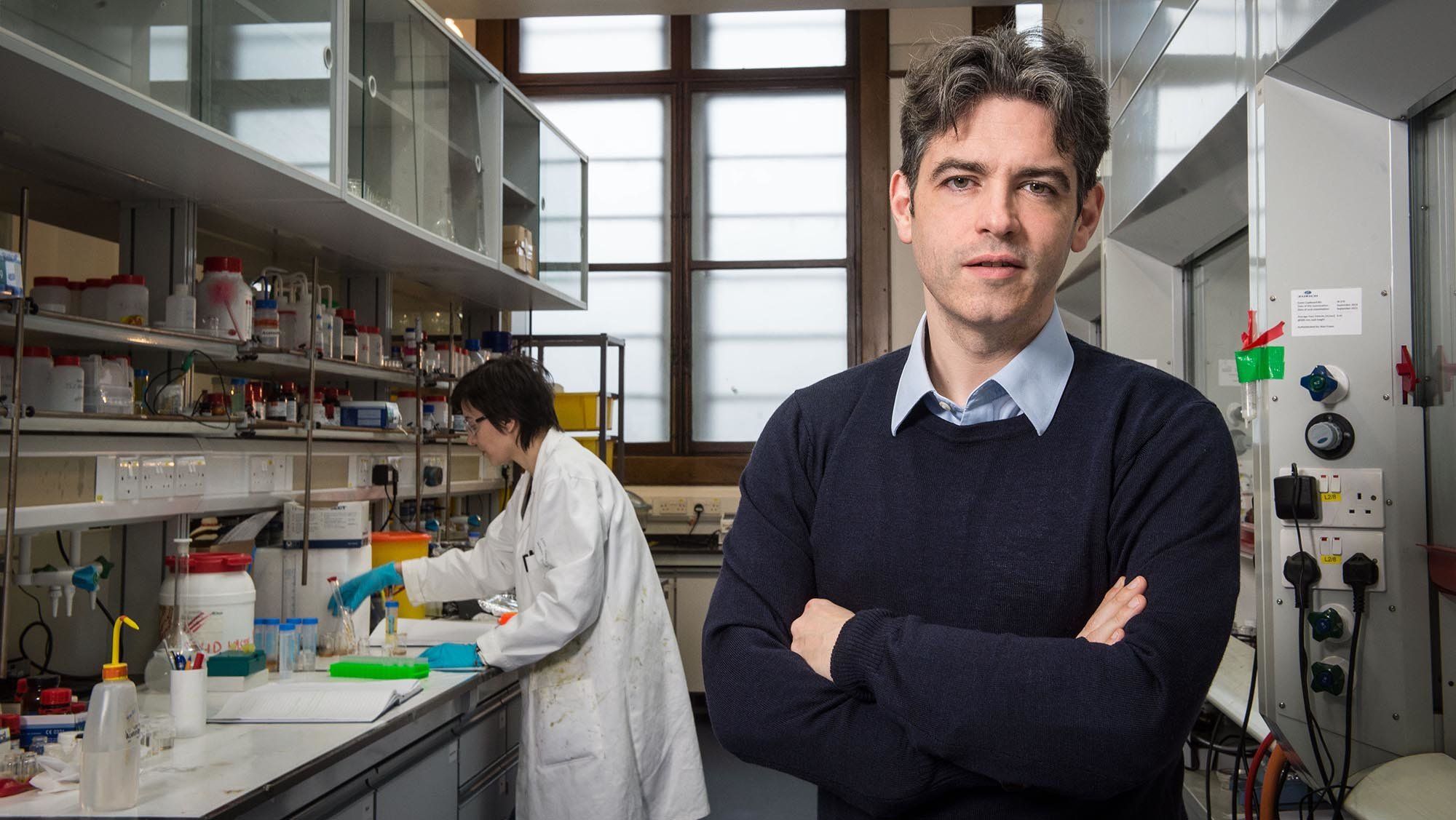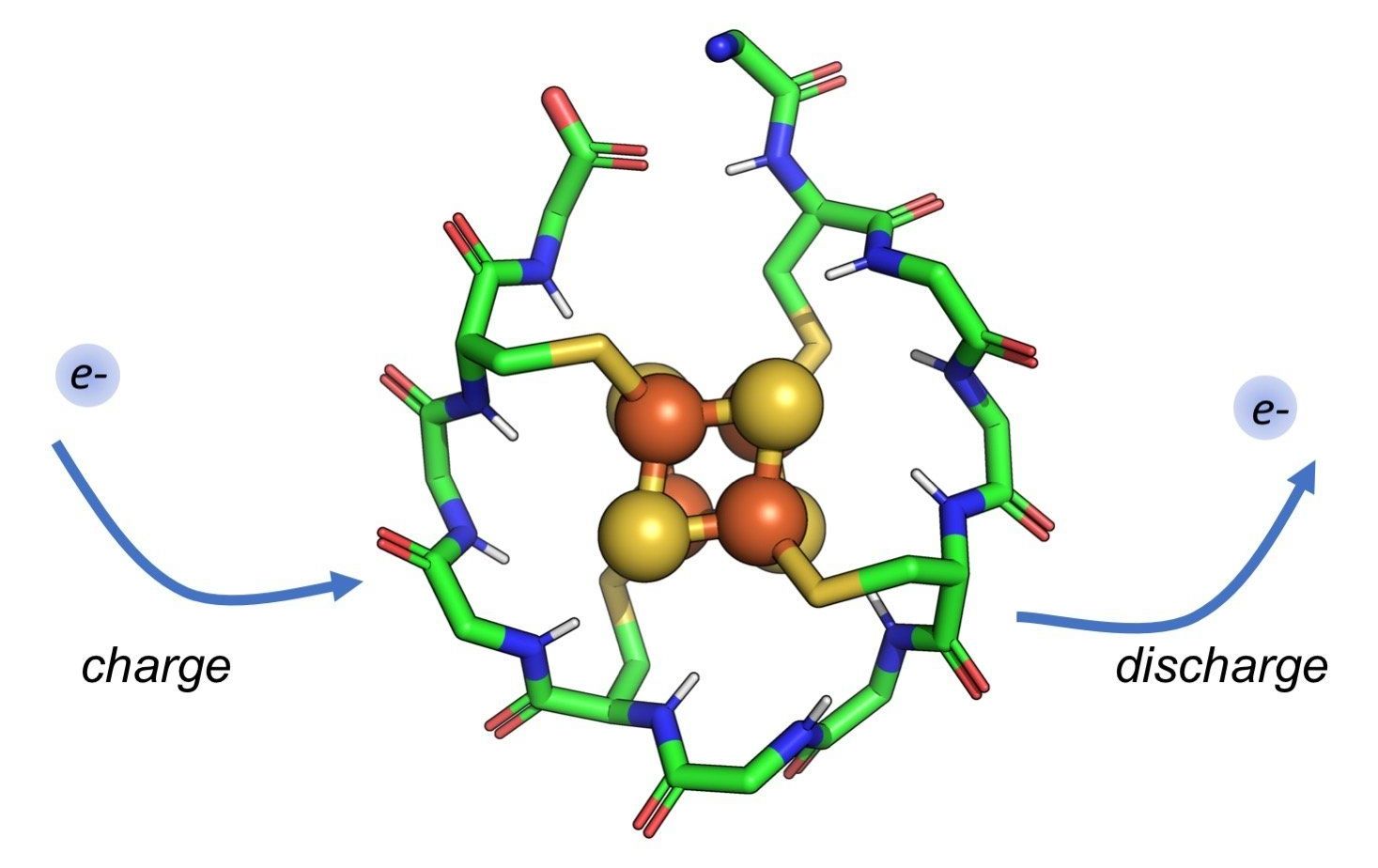Archive for the ‘chemistry’ category: Page 325
Oct 8, 2018
Engineers build smallest integrated Kerr frequency comb generator
Posted by Genevieve Klien in categories: biotech/medical, chemistry, computing, engineering, security
Optical frequency combs can enable ultrafast processes in physics, biology, and chemistry, as well as improve communication and navigation, medical testing, and security. The Nobel Prize in Physics 2005 was awarded to the developers of laser-based precision spectroscopy, including the optical frequency comb technique, and microresonator combs have become an intense focus of research over the past decade.
A major challenge has been how to make such comb sources smaller and more robust and portable. In the past 10 years, major advances have been made in the use of monolithic, chip-based microresonators to produce such combs. While the microresonators generating the frequency combs are tiny—smaller than a human hair—they have always relied on external lasers that are often much larger, expensive, and power-hungry.
Researchers at Columbia Engineering announced today in Nature that they have built a Kerr frequency comb generator that, for the first time, integrates the laser together with the microresonator, significantly shrinking the system’s size and power requirements. They designed the laser so that half of the laser cavity is based on a semiconductor waveguide section with high optical gain, while the other half is based on waveguides, made of silicon nitride, a very low-loss material. Their results showed that they no longer need to connect separate devices in the lab using fiber—they can now integrate it all on photonic chips that are compact and energy efficient.
Oct 4, 2018
Artificial enzymes convert solar energy into hydrogen gas
Posted by Bill Kemp in categories: bioengineering, biological, chemistry, genetics, solar power, sustainability
In a new scientific article, researchers at Uppsala University describe how, using a completely new method, they have synthesised an artificial enzyme that functions in the metabolism of living cells. These enzymes can utilize the cell’s own energy, and thereby enable hydrogen gas to be produced from solar energy.
Hydrogen gas has long been noted as a promising energy carrier, but its production is still dependent on fossil raw materials. Renewable hydrogen gas can be extracted from water, but as yet the systems for doing so have limitations.
In the new article, published in the journal Energy and Environmental Science, an interdisciplinary European research group led by Uppsala University scientists describe how artificial enzymes convert solar energy into hydrogen gas. This entirely new method has been developed at the University in the past few years. The technique is based on photosynthetic microorganisms with genetically inserted enzymes that are combined with synthetic compounds produced in the laboratory. Synthetic biology has been combined with synthetic chemistry to design and create custom artificial enzymes inside living organisms.
Continue reading “Artificial enzymes convert solar energy into hydrogen gas” »
Sep 25, 2018
An Interview with Mike Bonkowski
Posted by Steve Hill in categories: biotech/medical, chemistry, genetics, life extension
Today, we have an interview with Dr. Michael Bonkowski, an expert on NAD+ biology and aging from the David Sinclair Lab, Harvard Medical School.
Michael Bonkowski aims to advance our understanding of the links between metabolism, aging, and age-associated diseases. He has published 35 peer-reviewed journal articles and has conducted multiple successful longevity studies. In Dr. David Sinclair’s lab, his research efforts are focused on the role of nutrient sensors’ regulation of endocrine signaling and aging in the mouse. He is also working on direct and indirect ways to drive the activity of these nutrient sensors by using dietary manipulations, small molecules, and chemical treatments.
Michael is trained as a pharmacologist, physiologist, and animal scientist. Some of his areas of expertise include animal physiology, genetics, glucose, and insulin homeostasis, metabolism, assay development, protein biochemistry, and transmission electron microscopy imaging.
Sep 25, 2018
Tenfold improvement in liquid batteries mean electric car refuelling could take minutes
Posted by Shailesh Prasad in categories: chemistry, energy, sustainability, transportation
One of the biggest drawbacks of electric vehicles – that they require hours and hours to charge – could be obliterated by new type of liquid battery that is roughly ten times more energy-dense than existing models, according to Professor Lee Cronin, the Regius Chair of Chemistry at the University of Glasgow, UK.
What’s so special about this liquid, or flow, battery?
“A normal electric vehicle has a solid battery, and when that runs out of charge you have to recharge it by plugging it in to a power socket. This takes half an hour or so if you find a rapid charger at a motorway service station, or up to 12 hours at home. Our battery, however, is made of a liquid rather than a solid. If you run out of charge, you could in principle pump out the depleted liquid and – like a regular petrol or diesel vehicle – refill it with liquid that is ready-charged. And that would take minutes.”
Sep 21, 2018
Why NASA Needs a New Logo
Posted by Michael Lance in categories: chemistry, health, space

Do you think NASA needs a new logo?
Michael D. Shaw is a biochemist and freelance writer. A graduate of the University of California, Los Angeles, and a protégé of the late Willard Libby, winner of the 1960 Nobel Prize in chemistry, Shaw also did postgraduate work at MIT. Based in Virginia, he covers technology, health care and entrepreneurship, among other issues.
Sep 5, 2018
Researchers outline game-theory approach to better understand genetics
Posted by Genevieve Klien in categories: biotech/medical, chemistry, genetics
Principles of game theory offer new ways of understanding genetic behavior, a pair of researchers has concluded in a new analysis appearing in the Journal of the Royal Society Interface. Its work opens the possibility of comprehending biological processes, and specifically biochemistry, through a new scientific lens.
The exploration considers signaling game theory, which involves sender and receiver interactions with both seeking payoffs.
“The view of genes as players in a signaling game effectively animates genes and bestows simple utilities and strategies—thus, unique personalities—on them,” explains Bhubaneswar “Bud” Mishra, a professor at NYU’s Courant Institute of Mathematical Sciences, who co-authored the analysis with Steven Massey, an associate professor at the University of Puerto Rico. “In this view, the genome possesses characteristics of a molecular society, complete with deception, imitation, cooperation, and competition—not unlike human society. This adds a grandeur to a traditional view of life and the interactions it is made up of.”
Continue reading “Researchers outline game-theory approach to better understand genetics” »
Aug 30, 2018
Scientists identify protein that may have existed when life began
Posted by Genevieve Klien in category: chemistry
How did life arise on Earth? Rutgers researchers have found among the first and perhaps only hard evidence that simple protein catalysts—essential for cells, the building blocks of life, to function—may have existed when life began.
Their study of a primordial peptide, or short protein, is published in the Journal of the American Chemical Society.
In the late 1980s and early 1990s, the chemist Günter Wächtershäuser postulated that life began on iron- and sulfur-containing rocks in the ocean. Wächtershäuser and others predicted that short peptides would have bound metals and served as catalysts of life-producing chemistry, according to study co-author Vikas Nanda, an associate professor at Rutgers’ Robert Wood Johnson Medical School.
Aug 24, 2018
The Norris temperature network monitors Yellowstone’s thermal features
Posted by Genevieve Klien in category: chemistry
Yellowstone Caldera Chronicles is a weekly column written by scientists and collaborators of the Yellowstone Volcano Observatory. This week’s contribution is from Michael Poland, geophysicist with the U.S. Geological Survey and Scientist-in-Charge of the Yellowstone Volcano Observatory.
Norris Geyser Basin is one of the most dynamic geyser basins in Yellowstone National Park. It frequently experiences “disturbances” when thermal activity waxes and wanes and water chemistry changes over the course of a season.
Earthquake swarms are common nearby, and the surface moves up and down with some regularity. This dynamic behavior was emphasized by the 2003 disturbance, which was associated with an increase in ground and water temperatures, the formation of new springs, mudpots, and geysers, an uptick in overall geyser activity, and an expansion of areas of heated ground.
Continue reading “The Norris temperature network monitors Yellowstone’s thermal features” »
Jul 27, 2018
Deglacial changes in western Atlantic Ocean circulation
Posted by Bill Kemp in categories: chemistry, climatology, sustainability
A new study carried out by an international team of researchers, using the chemistry of ocean sediments has highlighted a widespread picture of Atlantic circulation changes associated with rapid climate change in the past.
The new integrated dataset, published today in the journal Nature Communications, provides new insights into the interactions of melting ice, ocean circulation and climate change, with potential implications for future long-term changes in the Earth systems with global climate change.
Dr. Hong Chin Ng from the University of Bristol’s School of Earth Sciences, is the study’s lead author.
Continue reading “Deglacial changes in western Atlantic Ocean circulation” »
















